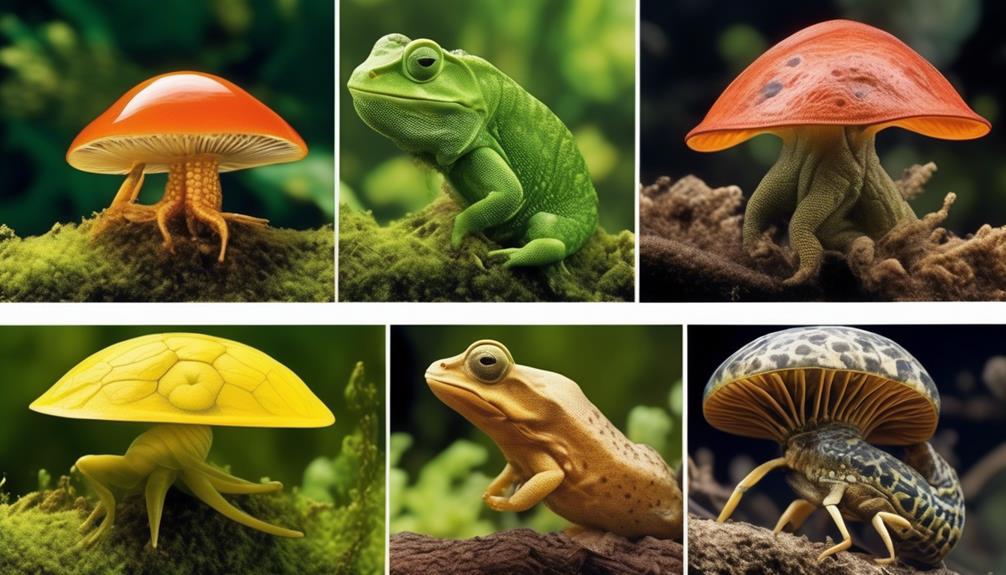Did you know that despite the vast diversity of life on Earth, there are numerous instances where different species have evolved similar structures to perform the same function? These fascinating adaptations, known as analogous structures, provide a glimpse into the remarkable adaptability of organisms.
From the wings of birds and bats to the streamlined bodies of sharks and dolphins, analogous structures are found across various taxa. But how do these structures arise, and what do they tell us about the evolutionary history of species?
Join us as we unravel the mysteries of analogous structures, explore four intriguing examples, and uncover the significance of these remarkable adaptations in understanding the intricacies of life.
Characteristics of Analogous Structures
Analogous structures, characterized by their distinct evolutionary origins, exhibit similar functions but possess different anatomical structures. These structures aren’t evidence of a common ancestor, but rather arise independently in different species. While they may have similar functions, their DNA sequences and internal structures differ.
Analogous structures provide insights into species adaptation and their ability to thrive in different environments. Scientists study these structures using molecular and DNA comparisons, fossil evidence, and phylogenies. They can occur through independent mutations, advantageous alleles, or hybridization when species face similar environments and selective challenges.
Examples of analogous structures include the fins in fish and dolphins, wings in birds and bats, eyes in mammals and octopuses, wings in insects and birds, and legs in kangaroos and ostriches. It’s important to distinguish analogous structures from homologous structures, which share a common evolutionary origin and indicate close evolutionary relationships.
Understanding the characteristics of analogous structures contributes to our knowledge of evolutionary history, adaptation, natural selection, and the diversity and adaptability of life forms. These structures also have practical applications in fields like medicine and engineering, contributing to our overall understanding of biological systems.
Examples of Analogous Structures
To further explore the concept of analogous structures, let’s examine some specific examples that illustrate the phenomenon of independent evolution leading to similar functions in different species.
One classic example is the development of fins in fish and dolphins. Although these species have different evolutionary origins, they both independently evolved fins for swimming.
Similarly, wings in birds and bats serve the purpose of flight, but they’ve different internal structures.
Another example is the independent evolution of eyes in mammals and octopuses. Despite their different anatomical structures, both species have evolved eyes with similar functions.
Insects and birds also provide an example of analogous structures, with wings that are used for flying.
Finally, the legs of kangaroos and ostriches showcase analogous structures adapted for locomotion, despite their different evolutionary origins.
These examples demonstrate how different species can independently evolve similar traits in response to similar environments and selective pressures.
Comparison With Homologous Structures
When comparing analogous structures with homologous structures, it’s important to understand the key differences between these two types of structural similarities.
Homologous structures share a common evolutionary origin and indicate a close evolutionary relationship. They exhibit both external and internal similarities and result from divergent evolution.
On the other hand, analogous structures have different evolutionary origins and don’t indicate a close evolutionary relationship. While they may have surface similarities, their internal structures are different. Analogous structures result from convergent evolution, which occurs when species independently evolve similar traits in response to similar environments and selective challenges.
The significance of comparing analogous and homologous structures lies in understanding the evolutionary history of species and studying adaptation and natural selection.
Homologous structures provide evidence for common ancestry and help scientists reconstruct evolutionary relationships.
Analogous structures, on the other hand, demonstrate the diversity and adaptability of life forms and highlight the role of natural selection in shaping organisms. They also contribute to the overall understanding of biological systems and have practical applications in fields like medicine and engineering.
Significance of Analogous Structures
The significance of analogous structures lies in their contribution to understanding the evolutionary history of species and studying adaptation and natural selection. By examining these structures, scientists are able to gain insights into how different species have independently evolved similar traits in response to similar environments and selective pressures. This provides evidence for convergent evolution, where unrelated species develop analogous structures due to similar functional demands.
Analogous structures also demonstrate the diversity and adaptability of life forms, highlighting the role of natural selection in shaping organisms. They help scientists understand the process of evolution by showing how different species can independently evolve similar traits, providing evidence of adaptation to similar environments.
Additionally, analogous structures aid in reconstructing evolutionary relationships and can have practical applications in fields like medicine and engineering.
Conclusion
In conclusion, analogous structures are fascinating biological phenomena that provide insights into species adaptation and their ability to thrive in diverse environments.
Through the study of these structures, scientists can better understand evolutionary history, adaptation, and natural selection.
By comparing analogous structures to their homologous counterparts, researchers gain a comprehensive understanding of the diversity and adaptability of life forms.
The significance of analogous structures in understanding biological systems can’t be overstated, as they contribute to our overall knowledge of species’ functions and evolutionary origins.

Erzsebet Frey (Eli Frey) is an ecologist and online entrepreneur with a Master of Science in Ecology from the University of Belgrade. Originally from Serbia, she has lived in Sri Lanka since 2017. Eli has worked internationally in countries like Oman, Brazil, Germany, and Sri Lanka. In 2018, she expanded into SEO and blogging, completing courses from UC Davis and Edinburgh. Eli has founded multiple websites focused on biology, ecology, environmental science, sustainable and simple living, and outdoor activities. She enjoys creating nature and simple living videos on YouTube and participates in speleology, diving, and hiking.

